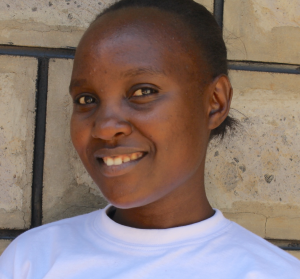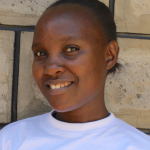Muyere Primary School is located in Tiriki Village of Vihiga County. The students arrive at school with water from home before 7am and do revision work with the help of their teachers.
They usually have a school feeding program so they do not have to go home for lunch. At around 3:10pm, they start their evening cleaning and the lower primary students are released to go home. The class seven and eight students usually have evening preparations. They are usually released at 6pm to go home.
The headteacher of Muyere Secondary School called one of our field officers and requested her to make a visit to the school to assess their water and sanitation facilities.
Many local people feel the county government is not concerned about the welfare of schools. Muyere Primary School is in a very needy state despite the fact that the ward representative resides near the school. The school headteacher informed us that he has been asking for help but all has been in vain. The school administration has been applying for help from the member of parliament by all means but got no response from his office.
We arrived at the school at 5pm and found students sitting in their classrooms doing assignments. We immediately saw that the primary school is in great need because they only have a 5,000-liter water tank, which is leaking, and share latrines with the secondary students.
Water
Water is collected from the small plastic rainwater tank. Since the tank doesn't last long, they must also walk to a nearby spring. The support staff makes the trip to the spring most often.
Sometimes, the students have to carry water from home to fill the containers in which they store the drinking water. Some of the springs from which they fetch their water are unprotected, and sometimes the students drink the water directly without waiting for it to be treated. This makes them get a fever that is not easy to treat.
Sanitation
The latrines at the school are broken down and are shared with the secondary section.
The school has a health club in place which sensitizes the students on the importance of practicing good hygiene. They also used to improvise handwashing stations which had soap and sometimes ash. These stations did not last because they were left outside and got stolen.
Teachers find it difficult to teach, since most of the pupils do not attend school due to illness and therefore perform poorly in their academics.
Here’s what we’re going to do about it:
Training
Training will be held for two days. The facilitator will use PHAST (participatory hygiene and sanitation transformation), ABCD (asset-based community development), CTC (child to child), lectures, group discussions, and handouts to teach health topics and ways to promote good practices within the school. The CTC method will prepare students to lead other students into healthy habits, as well as kickstart a CTC club for the school. In this case, the health club that already exists will be equipped with the knowledge and other tools they need to teach their peers.
Handwashing Stations
This CTC club will oversee the new facilities, such as handwashing stations, and make sure they are kept clean and in working condition. The two handwashing stations will be delivered to the school, and the club will fill them with water on a daily basis and make sure there is always a cleaning agent such as soap or ash.
VIP Latrines
Two triple-door latrines will be constructed with local materials that the school will help gather. Three doors will serve the girls while the other three serve the boys. And with a new source of water on school grounds, students and staff should have enough to keep these new latrines clean.
Rainwater Catchment Tank
A 50,000-liter rainwater catchment tank will help alleviate the water crisis at this school. The school will also help gather the needed materials such as sand, rocks, and water from the spring for mixing cement. Once finished, this tank can begin catching rainfall that will be used by the school’s students and staff.
We and the school strongly believe that with this assistance, standards will significantly improve. These higher standards will translate to better academic performance!

 Rainwater Catchment
Rainwater Catchment
 Rehabilitation Project
Rehabilitation Project



































